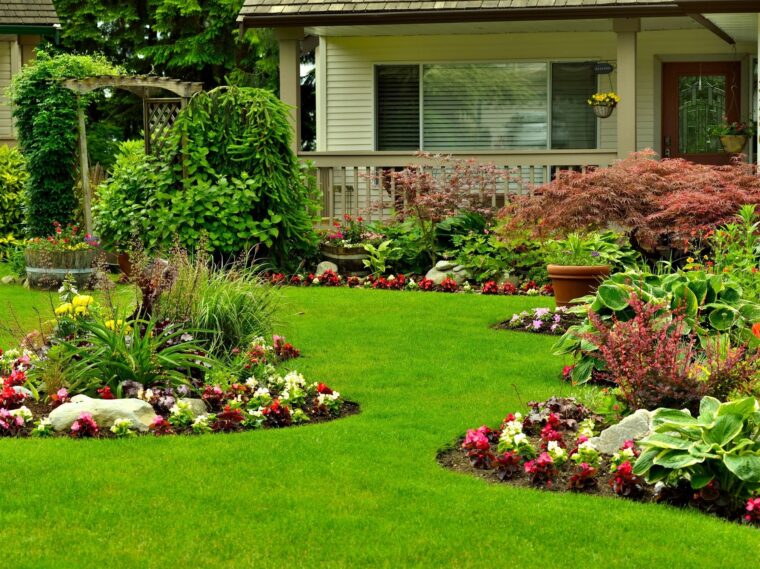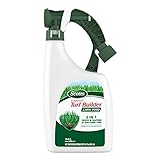“Green Perfection, Grounded in Care.”
Introduction
Turf maintenance is a critical aspect of landscape management, encompassing a range of practices aimed at ensuring the health, aesthetics, and functionality of grass surfaces. Whether for residential lawns, sports fields, or golf courses, effective turf maintenance involves a combination of mowing, fertilization, irrigation, aeration, and pest control. Each of these practices plays a vital role in promoting robust grass growth, preventing disease, and enhancing the overall appearance of the turf. By understanding the specific needs of different grass types and environmental conditions, turf managers can implement tailored strategies that optimize the resilience and beauty of these green spaces.
Seasonal Turf Care: Essential Tips for Each Season
Turf maintenance is a year-round commitment that requires attention to the unique needs of each season. Understanding the specific requirements of your lawn during different times of the year can ensure a lush, healthy, and vibrant turf. As the seasons change, so do the environmental conditions that affect grass growth, health, and appearance. Therefore, it is crucial to adapt your turf care practices accordingly to maintain its optimal condition.
In the spring, as temperatures begin to rise and the ground thaws, it is time to focus on rejuvenating your lawn after the dormancy of winter. This season is ideal for aerating the soil, which helps alleviate compaction and allows air, water, and nutrients to penetrate the root zone more effectively. Additionally, spring is the perfect time to apply a balanced fertilizer to provide essential nutrients that promote vigorous growth. It is also important to address any bare patches by overseeding, ensuring that the new grass has ample time to establish before the heat of summer arrives.
As spring transitions into summer, the focus shifts to maintaining the health and resilience of the turf under the stress of higher temperatures and increased foot traffic. During this period, watering becomes a critical component of turf care. It is advisable to water deeply and infrequently, encouraging deep root growth and reducing the risk of disease. Mowing practices should also be adjusted; raising the mower blade height can help shade the soil, reduce evaporation, and prevent weed growth. Moreover, summer is a time to be vigilant about pest and weed control, as these can quickly undermine the health of your lawn.
With the arrival of autumn, the emphasis moves towards preparing the turf for the upcoming winter months. Fall is an excellent time for aeration and overseeding, as the cooler temperatures and increased rainfall create favorable conditions for seed germination and root development. Applying a slow-release fertilizer in the fall can also help strengthen the grass, providing it with the necessary nutrients to withstand the winter. Additionally, regular leaf removal is essential to prevent smothering the grass and creating an environment conducive to disease.
Finally, as winter sets in, turf maintenance becomes more about protection than active care. It is important to minimize foot traffic on the lawn during this time to prevent soil compaction and damage to the dormant grass. While fertilization and mowing are not typically required in winter, it is crucial to keep an eye on any potential issues, such as snow mold, which can affect the turf’s health. If snow cover is present, it is advisable to avoid piling snow on the lawn, as this can lead to prolonged moisture retention and potential damage.
In conclusion, effective turf maintenance requires a strategic approach that considers the specific needs of each season. By adapting your care practices to the changing conditions throughout the year, you can ensure that your lawn remains healthy, resilient, and visually appealing. From spring rejuvenation to summer resilience, fall preparation, and winter protection, each season presents unique challenges and opportunities for maintaining a thriving turf. By following these essential tips, you can enjoy a beautiful lawn that enhances the aesthetic and functional value of your outdoor space year-round.
Eco-Friendly Turf Maintenance: Sustainable Practices for a Greener Lawn

Eco-friendly turf maintenance is becoming increasingly important as homeowners and landscapers seek sustainable practices to maintain lush, green lawns while minimizing environmental impact. Traditional lawn care methods often rely heavily on chemical fertilizers, pesticides, and excessive water usage, which can lead to soil degradation, water pollution, and harm to local ecosystems. By adopting sustainable practices, individuals can enjoy the aesthetic and recreational benefits of a well-maintained lawn while contributing to environmental conservation.
One of the fundamental aspects of eco-friendly turf maintenance is soil health. Healthy soil is the foundation of a thriving lawn, as it supports robust root systems and efficient nutrient uptake. To enhance soil health, it is advisable to conduct a soil test to determine nutrient levels and pH balance. Based on the results, organic amendments such as compost or well-rotted manure can be added to improve soil structure and fertility. These organic materials not only provide essential nutrients but also enhance the soil’s ability to retain moisture, reducing the need for frequent watering.
In addition to soil health, selecting the right grass species is crucial for sustainable lawn care. Native or drought-resistant grass varieties are well-adapted to local climate conditions and require less water and maintenance. By choosing these species, homeowners can significantly reduce water consumption and the need for chemical inputs. Moreover, incorporating a mix of grass species can increase biodiversity, making the lawn more resilient to pests and diseases.
Water conservation is another critical component of eco-friendly turf maintenance. Overwatering is a common issue that not only wastes a precious resource but also promotes shallow root growth and increases susceptibility to disease. To conserve water, it is recommended to water lawns deeply but infrequently, allowing the soil to dry out between watering sessions. This practice encourages deep root growth, making the grass more drought-tolerant. Additionally, using rain barrels to collect rainwater for irrigation can further reduce reliance on municipal water supplies.
Mowing practices also play a significant role in sustainable lawn care. Setting the mower blade to a higher setting allows grass to grow taller, which shades the soil and reduces evaporation. Taller grass also competes more effectively with weeds, reducing the need for herbicides. Furthermore, leaving grass clippings on the lawn after mowing can act as a natural fertilizer, returning valuable nutrients to the soil and reducing the need for synthetic fertilizers.
Pest and weed management in eco-friendly turf maintenance focuses on prevention and natural control methods. Encouraging beneficial insects, such as ladybugs and predatory beetles, can help control pest populations naturally. For weed control, manual removal and the use of organic mulches can be effective strategies. Additionally, maintaining a healthy, dense lawn through proper mowing, watering, and fertilization practices can naturally suppress weed growth.
In conclusion, eco-friendly turf maintenance involves a holistic approach that prioritizes soil health, water conservation, and natural pest and weed management. By implementing these sustainable practices, homeowners can enjoy a beautiful, healthy lawn while minimizing their environmental footprint. As awareness of environmental issues continues to grow, adopting eco-friendly lawn care practices not only benefits individual properties but also contributes to broader efforts in environmental conservation and sustainability.
Common Turf Diseases: Identification and Prevention Strategies
Turf maintenance is a critical aspect of landscape management, and understanding common turf diseases is essential for maintaining healthy and aesthetically pleasing lawns. Turf diseases can significantly impact the appearance and health of grass, leading to unsightly patches and, in severe cases, the complete loss of turf. Therefore, identifying these diseases early and implementing effective prevention strategies is crucial for any turf manager or homeowner.
One of the most prevalent turf diseases is Brown Patch, caused by the fungus Rhizoctonia solani. This disease typically manifests as circular patches of brown, dead grass, often surrounded by a dark ring. Brown Patch thrives in warm, humid conditions, making it a common issue during the summer months. To prevent Brown Patch, it is essential to avoid overwatering and ensure proper drainage, as excess moisture can exacerbate the problem. Additionally, maintaining balanced nitrogen levels in the soil can help reduce the risk of this disease, as excessive nitrogen can promote fungal growth.
Another common turf disease is Dollar Spot, which is caused by the fungus Clarireedia jacksonii. This disease is characterized by small, silver-dollar-sized spots of bleached grass. Dollar Spot is most active in warm, humid weather, particularly when there is a significant difference between day and night temperatures. To prevent Dollar Spot, it is important to maintain adequate nitrogen levels and ensure proper mowing practices. Regularly sharpening mower blades can help prevent the spread of the disease, as dull blades can damage grass and create entry points for pathogens.
Pythium Blight, caused by various species of the Pythium fungus, is another significant concern for turf managers. This disease is particularly destructive, often resulting in rapid turf loss. Pythium Blight appears as water-soaked, greasy patches of grass that can quickly expand under favorable conditions. High humidity and poor air circulation are conducive to the development of Pythium Blight. To prevent this disease, it is crucial to improve air circulation by trimming surrounding vegetation and to avoid overwatering. Additionally, using fungicides as a preventive measure can be effective, especially in areas with a history of Pythium Blight.
Red Thread, caused by the fungus Laetisaria fuciformis, is a disease that primarily affects cool-season grasses. It is identified by the presence of pink or red thread-like structures on the grass blades. Red Thread is most prevalent in cool, wet weather and is often associated with nitrogen-deficient soils. To prevent Red Thread, it is important to maintain proper fertilization practices, ensuring that the turf receives adequate nitrogen. Aerating the soil can also help improve drainage and reduce the risk of this disease.
In addition to these specific prevention strategies, there are general practices that can help reduce the risk of turf diseases. Regularly monitoring the lawn for signs of disease and maintaining a consistent mowing schedule are essential. Ensuring that the turf is not stressed by environmental factors, such as drought or excessive foot traffic, can also help maintain its health. Furthermore, selecting disease-resistant grass varieties when establishing or renovating a lawn can provide an additional layer of protection.
In conclusion, understanding common turf diseases and implementing effective prevention strategies are vital components of successful turf maintenance. By identifying diseases early and taking proactive measures, turf managers and homeowners can ensure the health and beauty of their lawns, ultimately enhancing the overall landscape.
Conclusion
Effective turf maintenance is essential for ensuring a healthy, aesthetically pleasing, and functional lawn or sports field. It involves a combination of practices such as regular mowing, proper irrigation, fertilization, aeration, and pest control. Mowing should be done at the correct height and frequency to promote dense growth and prevent weed invasion. Adequate irrigation is crucial, with attention to water conservation and avoiding overwatering. Fertilization should be tailored to the specific nutrient needs of the turfgrass species and soil conditions. Aeration helps alleviate soil compaction, improving root growth and water infiltration. Integrated pest management strategies can minimize damage from weeds, insects, and diseases while reducing reliance on chemical treatments. By adhering to these practices, turf managers can maintain vibrant, resilient turf that meets aesthetic and functional requirements.












